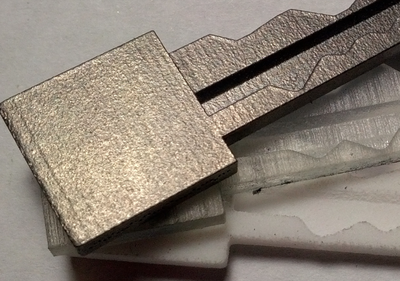At the recent Defcon event student researchers from MIT exhibited a new technique that could reduce the security of physical locks from Schlage.
Schlage’s most secure lock is the Primus model, touted as “asdf”. The idea is that you would have great difficulty duplicating the unusual key shape used by the Primus system. Schlage’s approach here is to provide security by making the key difficult to duplicate. They even have “Do Not Duplicate” stamped on them as an assurance.
Until now. The MIT folks, David Lawrence and Eric Van Albert, produced a system that can transform an image of a Primus key into a 3D model of same. The noteworthy aspect is that the model, when 3D printed, actually works. It unlocks the Primus lock.
This means that you can now easily duplicate the previously hard-to-get Primus keys. All you need is an image of the target key, which you could get with a smartphone, photocopier or, if you’re business is espionage, a hidden camera, perhaps attached to a telescope. Send the resulting 3D model to Shapeways, i.Materialise or other 3D print services and you’ll soon have a working duplicate key.
You can’t use this new system to generate “any” key. You can only duplicate keys that you can visually capture. Keep your keys hidden and you should be ok, but there have been attempts to perform “remote capture” of keys.
On the other hand, maybe it’s time to make locks more secure by adding identifier chips as done in automobile keys? In fact, why have a key at all – you really just need the chip.
Is this a big deal? We think not. Few keys would be compromised in this way, and if you have something you really need protecting, you should be using chipped keys anyway.
Via Forbes


